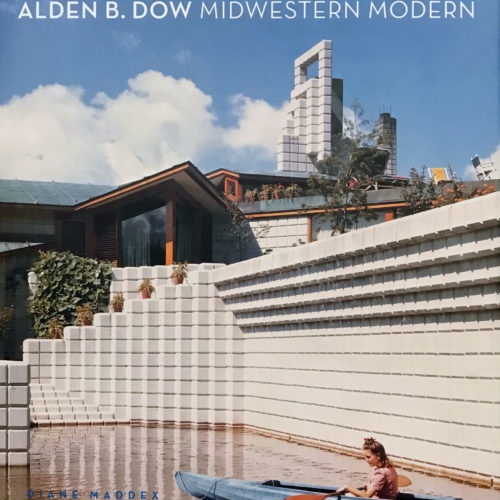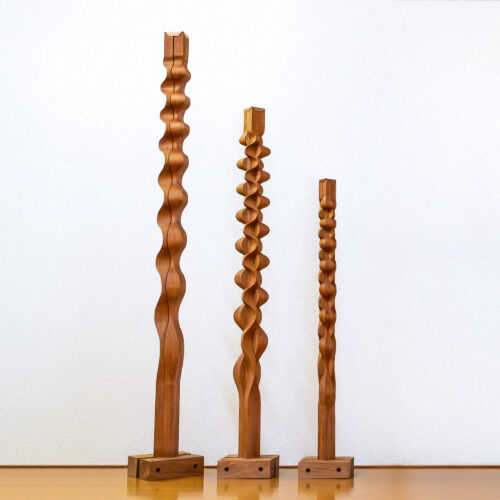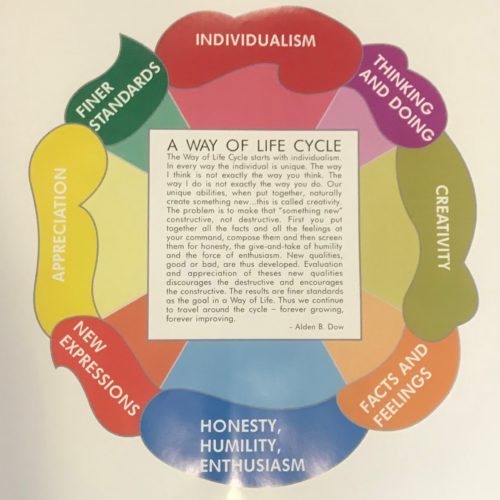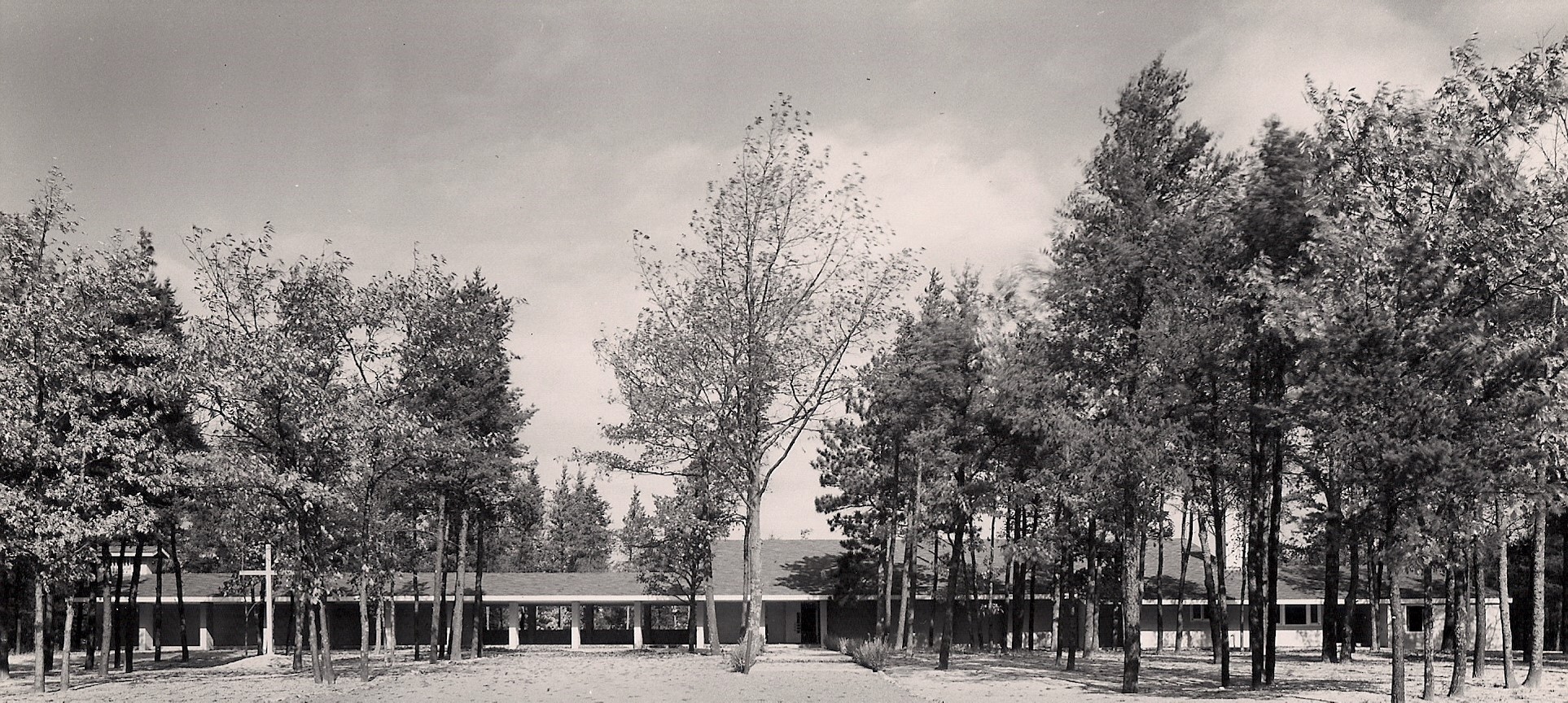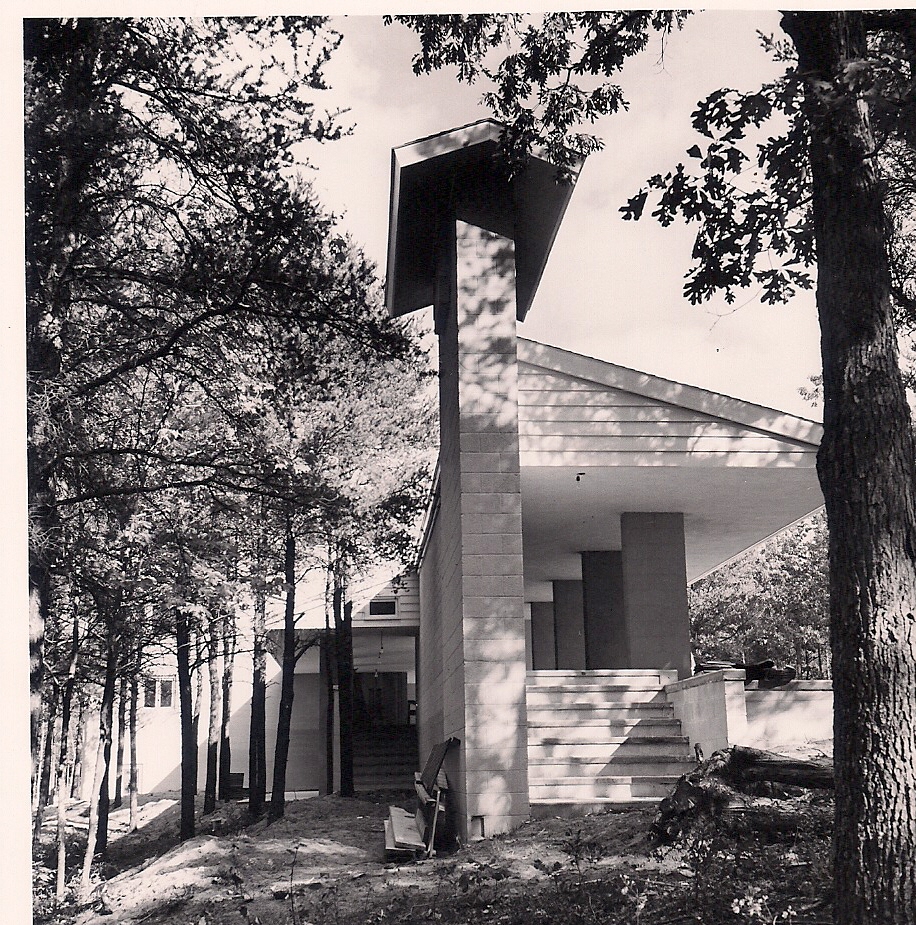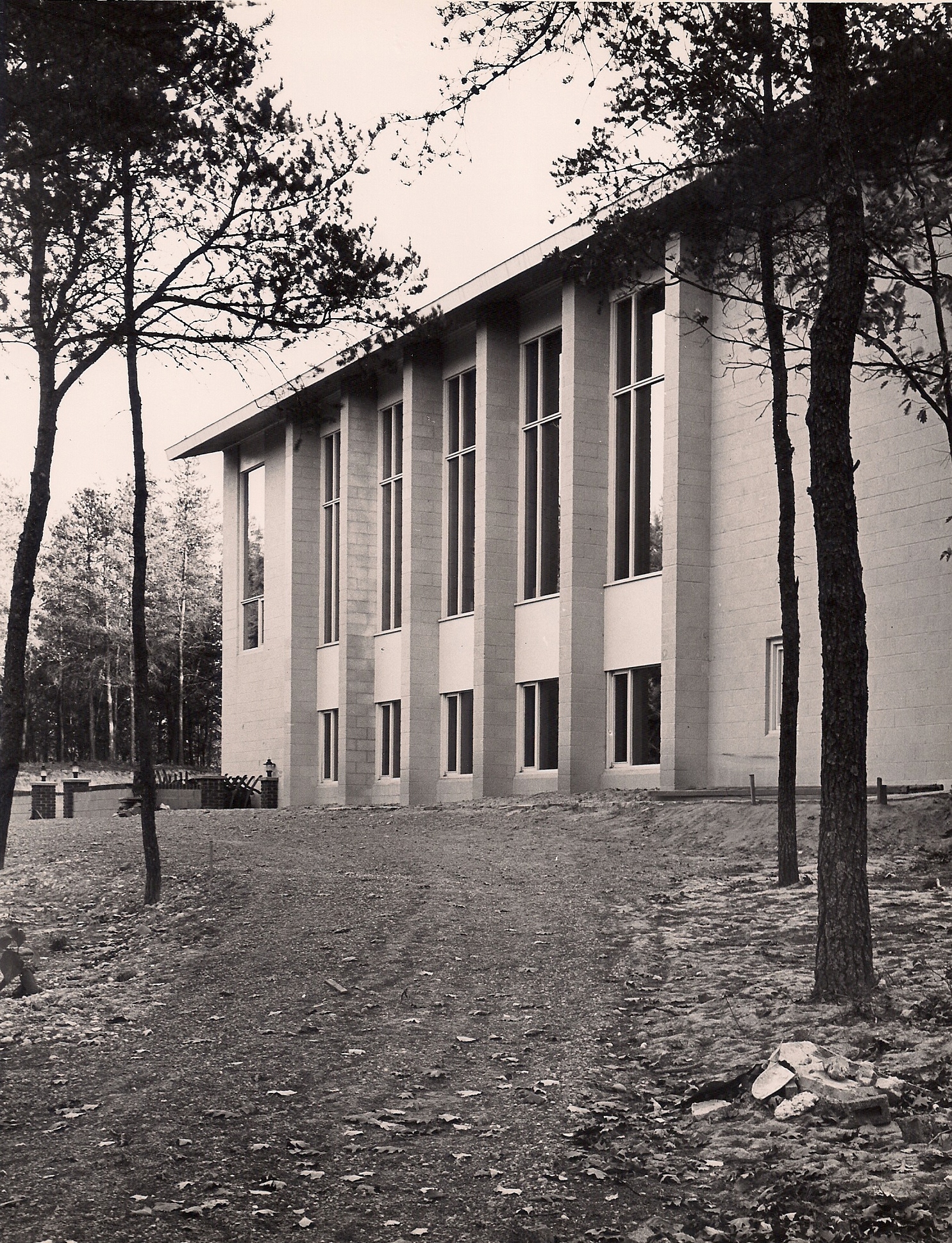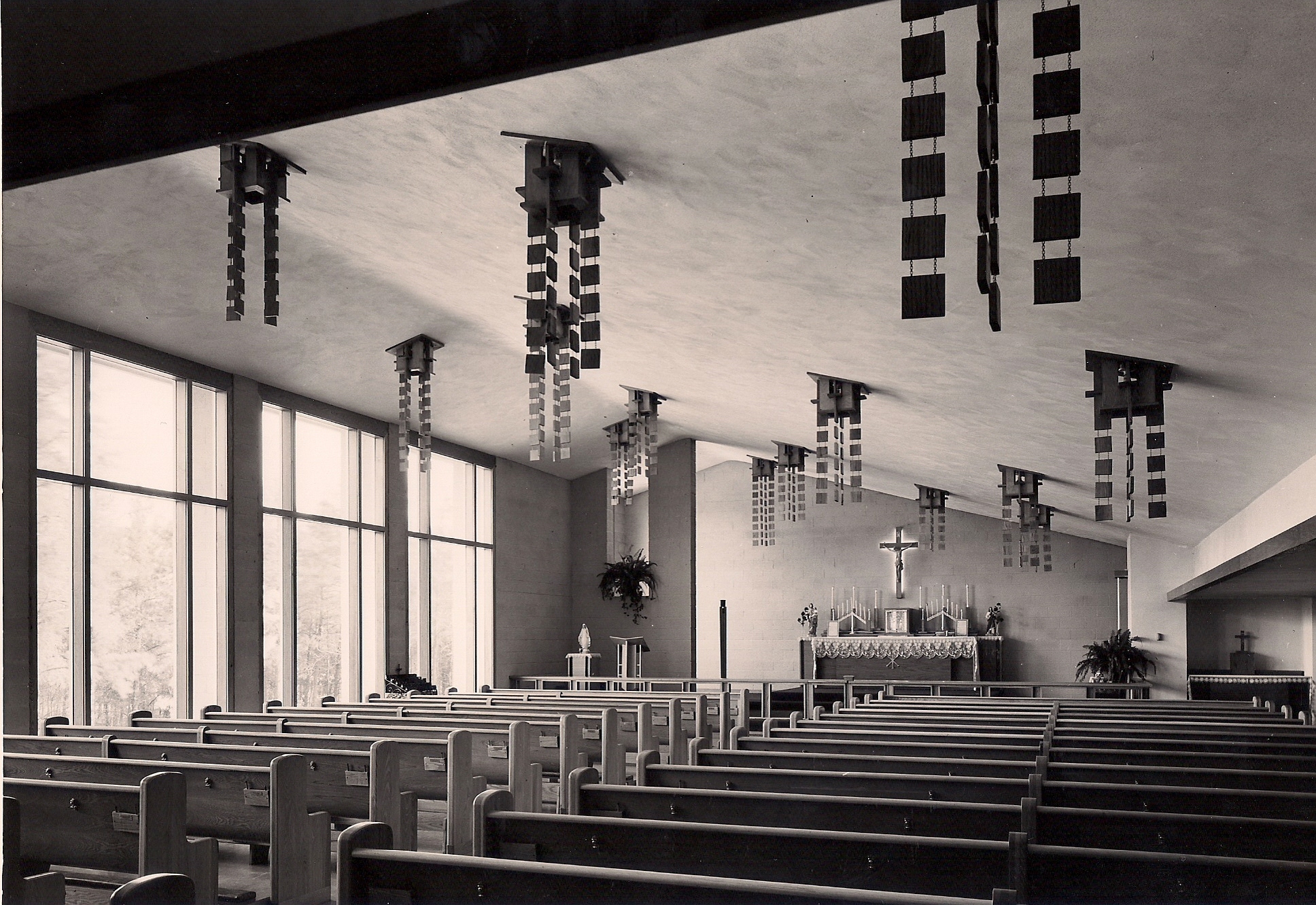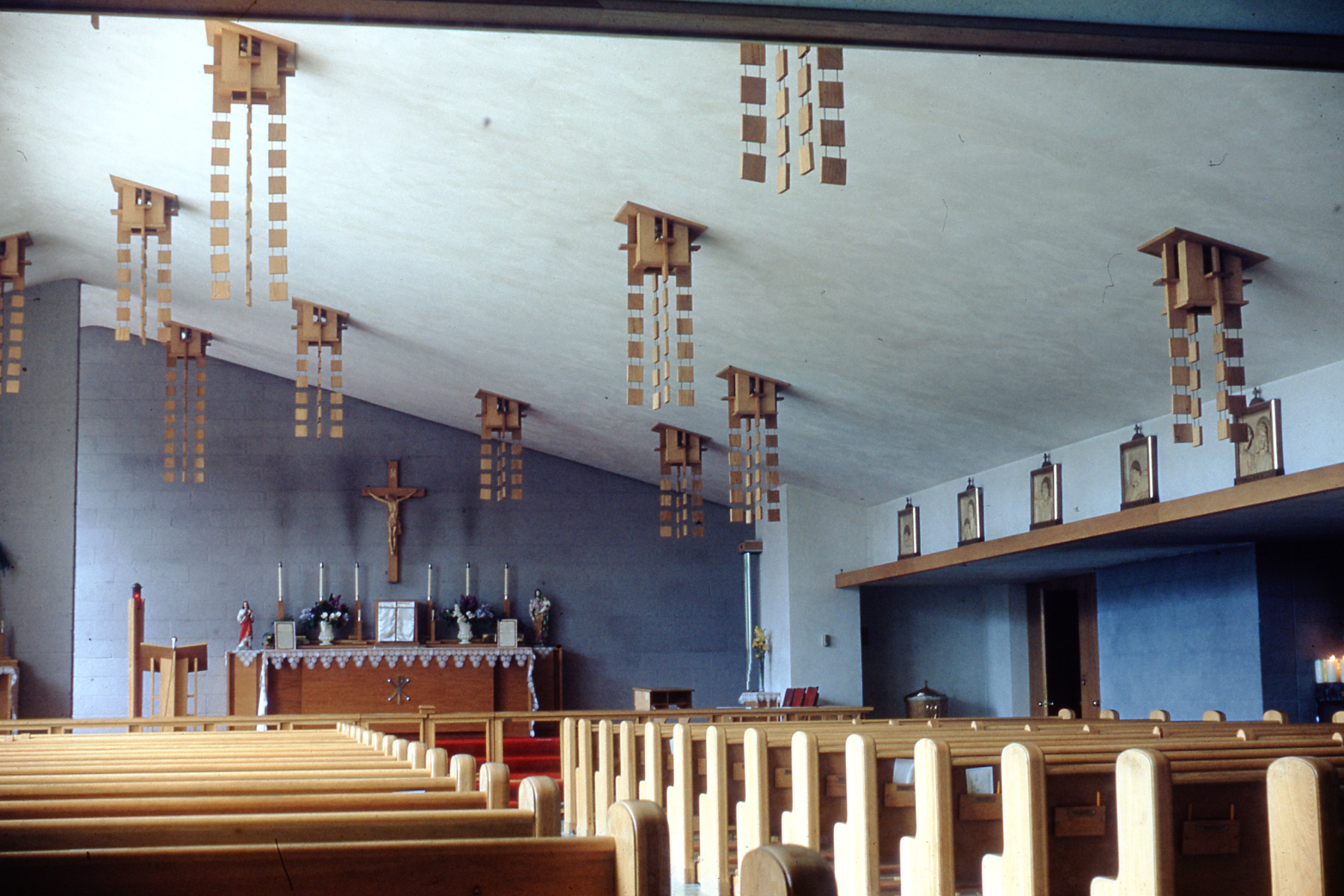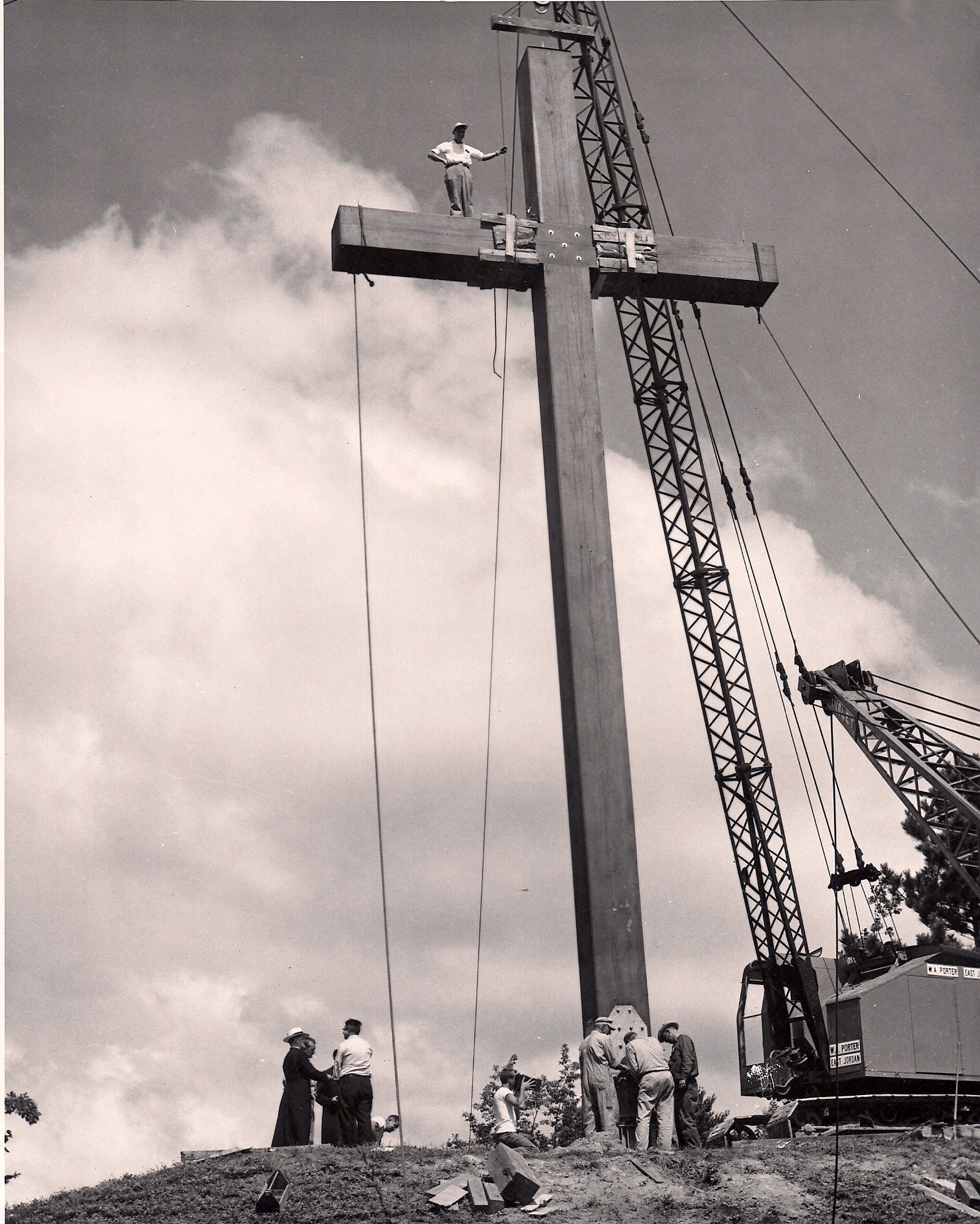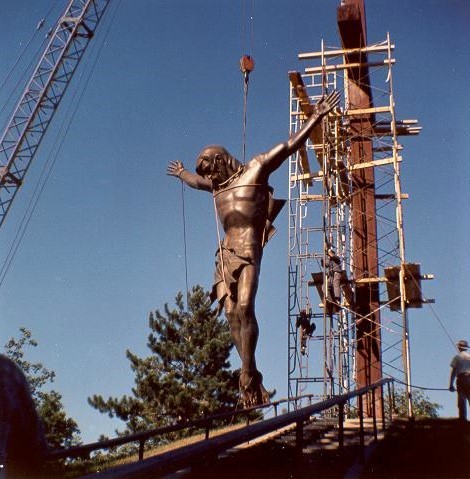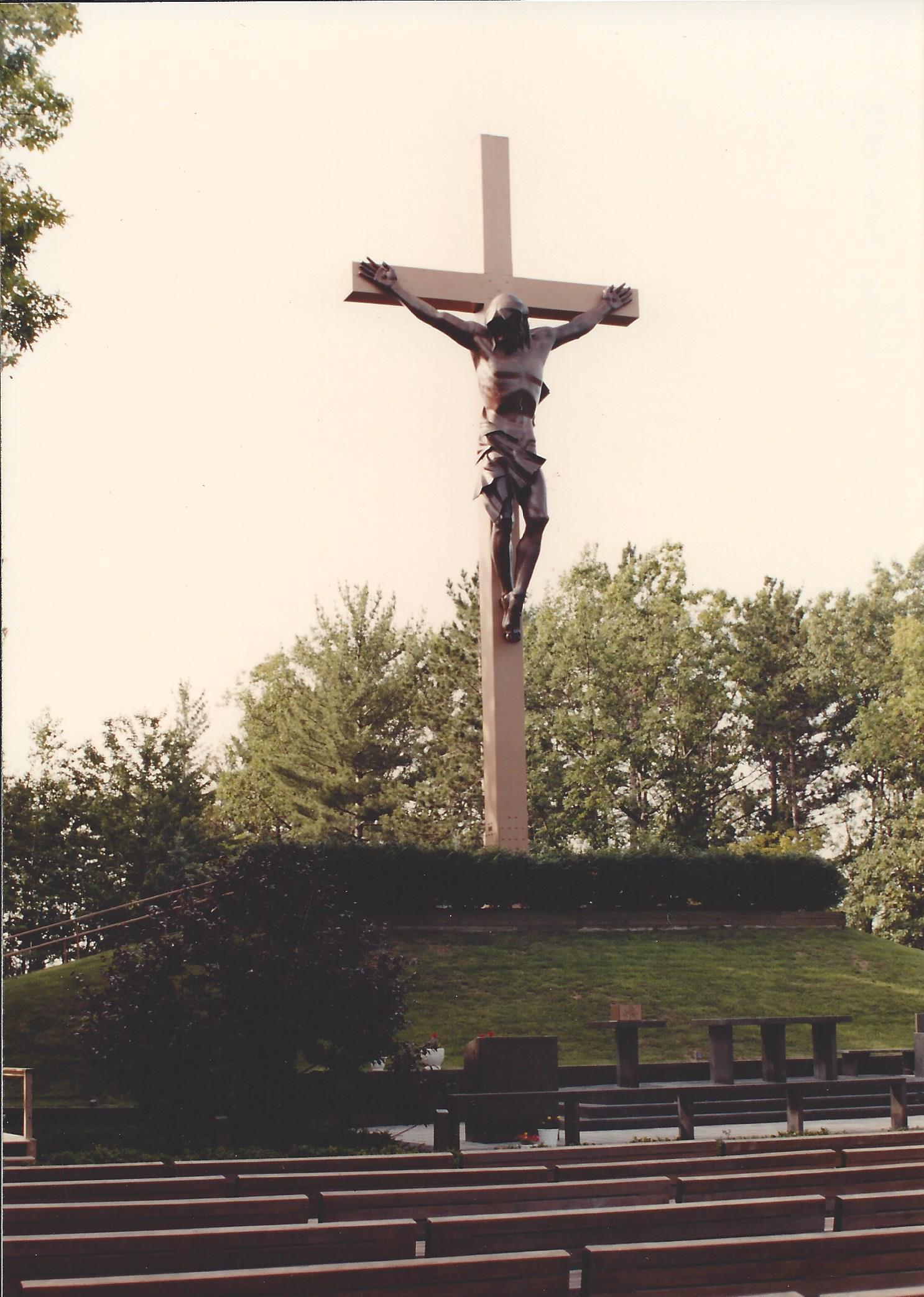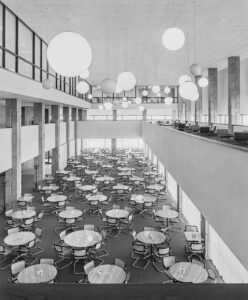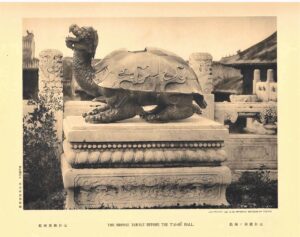Nestled among tall pines and set into a sloping lot overlooking Burt Lake in northern Michigan, Indian River Catholic Church was designed by Alden B. Dow in 1948. Very little documentation exists aside from specifications for a church and rectory building—no contract, no building contractor, no cost information, and scant correspondence. Not readily recognizable as a church, its elongated rectangular plan has been compared to the Long House style of dwelling originally built by Native Americans that housed extended families and also was used for community gatherings or ceremonies.
The main body of the church runs 43 feet by 90 feet. The rectory is connected at one end, making the overall length of the building 230 feet. At the opposite end is the entrance. The exterior is made of cinder block with a slightly-pitched roof. A colonnade extending the length of the church is supported by 12 block piers. The lake-facing side reveals a lower level.
Inside there is seating for 250 people with a wall of tall windows providing expansive views of the natural surroundings. The plaster ceiling slants down from the top of the windows and features 18 unique wooden box lights from which hang lengths of connected wooden squares. A large assembly room is located on the ground floor. The attached rectory has a living room, dining room, study, kitchen, three bedrooms, and two bathrooms on two levels.
The building was completed by Memorial Day weekend of 1949. In 1955, Mr. Dow was called upon to design a large wooden crucifix on the hill to the north of the church. For this project, the architect collaborated with Marshall Fredericks, one of the most prolific figural sculptors of the 20th century, who agreed to create a figure of Christ for the cross.
The process took four years from sketches to plaster mold. The figure was then cast in bronze at a foundry in Norway. Weighing seven tons and 28 feet tall from head to toe, it was one of the largest castings to be shipped across the Atlantic Ocean. Workers raised the sculpture into place August 9, 1959, and attached it to the 55-foot tall redwood cross with 13 bolts that were 30 inches long and two inches in diameter. The Blessing of the Cross took place on August 16, 1959.
Did you know? Appointments are welcome to view or study any of the Archives materials featured in this post and can be arranged by contacting us at archives@abdow.org.


